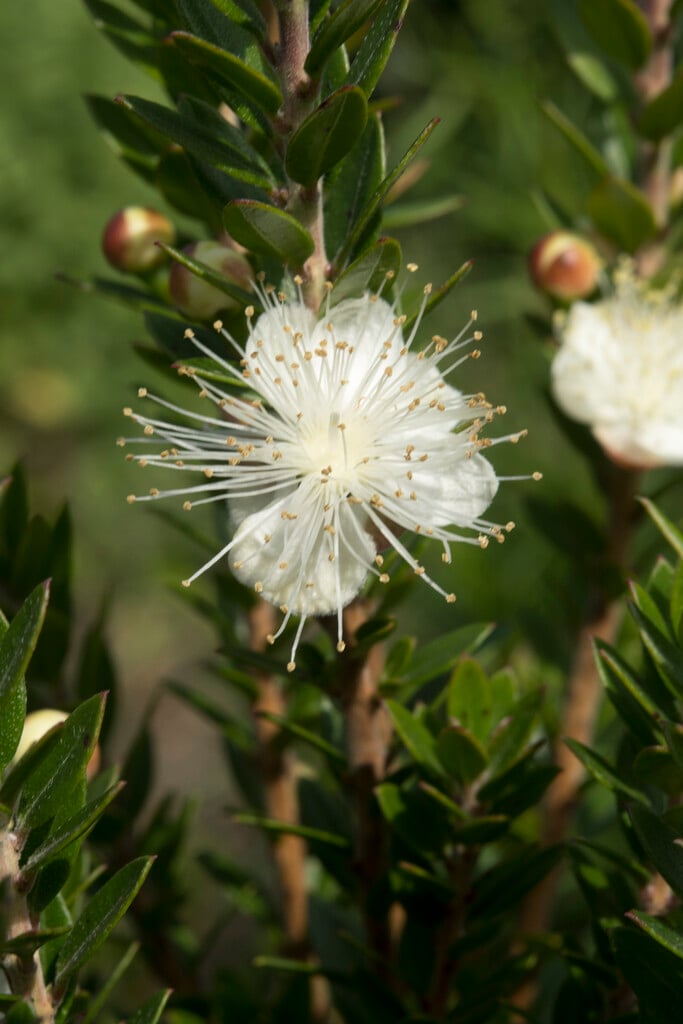Myrtus communis subsp. tarentina
Tarentum myrtle
A small evergreen shrub of dense growth, with small, narrowly ovate leaves, and pink buds opening to white flowers followed by white berries 12mm in length
Synonyms
Myrtus communis 'Nana'Myrtus 'Tarentina'
see moreMyrtus communis 'Microphylla'
Myrtus communis 'Jenny Reitenbach'
Myrtus communis subsp. tarentina 'Microphylla'
Size
Ultimate height
1–1.5 metresTime to ultimate height
10–20 yearsUltimate spread
1–1.5 metresGrowing conditions
Moisture
Moist but well–drainedpH
Acid, Alkaline, NeutralColour & scent
| Stem | Flower | Foliage | Fruit | |
| Spring | Green | |||
|---|---|---|---|---|
| Summer | Pink White | Green | ||
| Autumn | Green | White | ||
| Winter | Green |
Position
- Full sun
Aspect
East–facing or South–facing
Exposure
Sheltered Hardiness
H4Botanical details
- Family
- Myrtaceae
- Native to GB / Ireland
- No
- Foliage
- Evergreen
- Habit
- Bushy
- Genus
Myrtus are evergreen shrubs or small trees with aromatic, leathery leaves and solitary, bowl-shaped white flowers followed by fleshy, often edible berries
- Name status
Correct
- Plant range
- Mediterranean
How to grow
Cultivation
Grows well in most moderately fertile soils. Provide shelter from cold, drying winds. Long, hot summers are required for the production of fruits and flowers
Propagation
Propagate by seed sown in containers in a coldframe in autumn or root semi-hardwood cuttings in late summer with bottom heat
Suggested planting locations and garden types
- City and courtyard gardens
- Coastal
- Cottage and informal garden
- Mediterranean climate plants
- Low Maintenance
- Flower borders and beds
- Wall side borders
- Hedging and screens
Pruning
Pruning group 9 or pruning group 13 if wall-trained
Pests
Generally pest-free
Diseases
May be susceptible to honey fungus (rarely)
Get involved
The Royal Horticultural Society is the UK’s leading gardening charity. We aim to enrich everyone’s life through plants, and make the UK a greener and more beautiful place.

